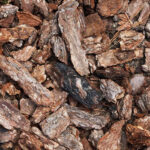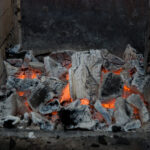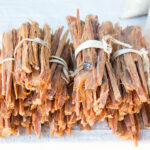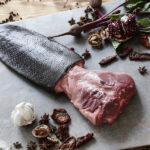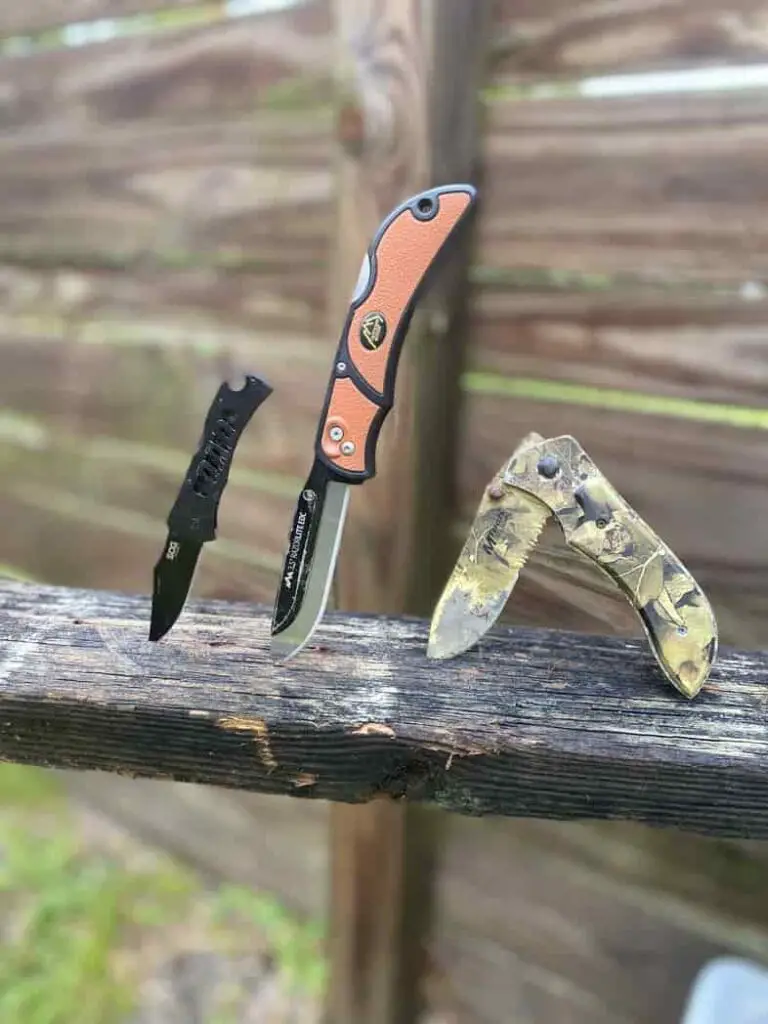
I’m a firm believer that everyone should carry a pocketknife, it’s an indispensable everyday tool. But, are expensive pocket knives worth it?
Truth is, expensive pocket knives aren’t just knives that you keep in your pocket to come to your aid when you’re in a jam. Instead, they’re quality knives that may become heirlooms and will last longer if not a lifetime.
Table of Contents
- Are Expensive Pocket Knives Worth It?
- How much is “Expensive”?
- What is the Difference Between Cheap and Expensive Pocket Knives?
- What Makes a Quality Pocket Knife and why are they Expensive?
- Should You Pay More for a Pocket Knife?
- What are some of the most expensive pocket Knives?
- Final Thoughts
Are Expensive Pocket Knives Worth It?
There’s a huge difference in quality between expensive and cheap pocket knives. Materials, blade quality, and overall aesthetic are often what you’ll pay for. The most expensive pocket knives are generally purchased as heirlooms and are handmade by skilled craftsmen.
In addition to quality, there are a lot of things that determine the price of a pocket knife. In this insightful article, we’ll take a look at many factors that make quality pocket knives more expensive and worth it.
How much is “Expensive”?
It’s important to try and quantify how much is ‘expensive’ when it comes to pocket knives. Now this is just my opinion, but here is what I think:
- $5-$20 – Inexpensive, everyday pocketknives found at your local general store, flea market, or online.
- $20-$50- sweet spot, good quality but affordable.
- $50-$100- ok, now were getting into expensive territory!
- $100-$250- Yep expensive; high quality, top grade!
- $250-$$$$? – the top 1% of all pocketknives; rare, collectible and unique craftsmanship!
What is the Difference Between Cheap and Expensive Pocket Knives?
While it’s true that a cheaper pocket knife can serve your needs just like an expensive model, investing in a more expensive model is more likely to benefit you in terms of longevity and additional features.
The biggest difference between a cheap pocket knife and an expensive pocket knife is, of course, in the quality.
For example, you can spend as little as ten bucks on a pocket knife but you may soon start having issues with its locking mechanism, handle or even the blade.
Again, cheaper pocket knives are generally mass-produced. This means that they’re not given the time and attention to detail required in creating a quality product that’s worth a hefty price.
This, however, doesn’t mean that cheaper pocket knives are totally worthless. Of course, they can perform the task at hand and there’s nothing wrong with buying a cheaper pocket knife if it’s within your budget and intended use.
In most cases, expensive pocket knives are high-quality knives that are designed not just to be functional, but also beautiful. And in some cases, rare and collectible.
An expensive pocket knife will have top-grade materials and construction, which will serve you much longer than a cheaper model.
So if you can afford it, then there’s nothing wrong with going for an expensive pocket knife as you’ll be much pleased with your purchase now and in the future.
See Also: Are Opinel Knives Really Any Good?
What Makes a Quality Pocket Knife and why are they Expensive?
The main difference between an expensive pocket knife and a cheaper pocket knife is quality. But what makes a quality knife? Let’s highlight features of a quality pocket knife and why they’re expensive.
The Blade Material
The material that is used to design the blade of a pocket knife and how the blade itself works is a huge factor in determining the price of a pocket knife.
In addition to retaining its sharp edge even after using it for many years, the blade should be very easy to sharpen and clean.
Unlike expensive pocket knives, cheaper pocket knives are generally built with substandard blades that can chip during use and even break. That being said, here are some of the materials that are used to construct blades for expensive pocket knives.
| Material | Description |
| Quality Stainless Steel | Rust-resistant high chromium steel that will remain sharp |
| 420HC | A nickel-free and rust-resistant high carbon martensitic stainless steel |
| Damascus Steel | Rare layered steel that’s used to make expensive pocket knives |
| Sandvik 12C27 | Swedish high chromium steel that is rust-resistant and offers strong edge retention |
Proper Handle Material
The grip or handle of a pocket knife is as important as its blade and is a major factor that determines the price of a pocket knife. This is because it’s responsible for the way you control the pocket knife.
A good pocket knife can be ruined by a low-quality handle material. As such, one of the main features that make expensive pocket knives worth it is the high quality of materials used to design the handle.
Here are a few top materials that are used to make handles of expensive pocket knives.
| Material | Description |
| Micarta | Resistant to temperatures and can withstand hard drops. Offers a comfortable grip, comes in a wide range of colors and can absorb the oil from your hands. |
| Wood | Very common, from simple hardwoods like oak, to expensive tropical woods like mahogany. |
| Stainless Steel | Heavier, durable, reliable, and versatile. It’s, however, common in cheaper pocket knives, so you have to be careful |
| Titanium | Lighter, durable, offers better grip, and traction. |
| Polymer | Very affordable, resistant to temperature changes, and can be easily molded to provide a better grip. |
Locking Mechanism
Having a pocket knife with a faulty blade or locking mechanism can be deadly as far as your safety is concerned. Unfortunately, many cheaper pocket knives are designed with faulty locking mechanisms or even no locking mechanism at all.
No matter what type or style of pocket knife you choose, I ALWAYS recommend one with a locking mechanism! This is a very important safety feature!
There are three types of lock mechanisms for pocket knives: frame lock, liner lock, and lock back. The most favored lock configuration for expensive pocket knives is the frame lock. This lock forms the whole handle and is sturdier as it engages the base of the tang when opened.
Frame locks may also come with additional features like detent balls, bars, pins, and subframe locks but these additional features depend on the manufacturer.
Brand Recognition and Credibility
Some expensive pocket knives are worth it based on the credibility, reputation, and popularity of the brand or manufacturer. These brands have been in the market for so long and have cultivated a rapport with knife enthusiasts who are willing to pay premium prices for these pocket knives.
Should You Pay More for a Pocket Knife?
Now that you’re aware of the features that make quality pocket knives expensive, you might still be wondering whether you should pay the hefty prices. Well, here are a few reasons why buying an expensive pocket knife might be worth it.
Better Quality and Aesthetics
One of the main reasons why you should buy an expensive pocket knife is because it looks beautiful and offers more quality. Of course, cheaper pocket knives won’t be as cool and won’t offer the same level of quality.
From the artisanal finishes, high level of craftsmanship, to the attention to detail involved, expensive pocket knives can be close to an expensive piece of jewelry.
Durability
Expensive pocket knives don’t compromise on quality and most of them are designed to last for a lifetime if not forever. This is, in fact, why expensive pocket knives are considered heirlooms that can be passed down to generations. Every part of these pocket knives is made to last.
On the contrary, cheap pocket knives are designed with subpar materials that may not last as much as their pricier counterparts.
See Also: Tomahawk vs Machete; Which is the better light-bladed tool?
What are some of the most expensive pocket Knives?
An expensive pocket knife can cost you north of $200. Here’s a list of some of the most expensive pocket knives in the world.
- Benchmade TI Monolock Family – $400
- Boker Mother of Pearl – $550
- Lancet Ouroboros Knife – $5,500
- Gentak Makara Knife – $12,500
- Searpoint Lace Knife – $25,000 (yikes!)
Final Thoughts
There is nothing wrong with your average run-of-the-mill pocketknife. I have carried one since I was about 13 years old.
But after a time, you will begin to appreciate the differences in price and quality, and notice that sometimes paying a little extra can go a long way. Especially if it’s a gift or sentimental item you wish to pass on.
I use my pocket knife every single day. Whether that is to open a package, cut fishing line or even slice my food…it really is an indispensable tool and I don’t mind paying a bit extra for one I know will last.
Thanks for reading!

